Full dedoming and light quality/color measurements
I have now dedomed the new XM-L2 more thoroughly and tested whether the dome can be easily removed with a fingernail, similar to the Nichia 519A, which could at least be possible due to the design of the LED.
In short - this is definitely possible, but you have to be careful not to pry off other parts as the silikone dome. Even when cold, the dome (or the rest of it) was easy to remove from the die. Presumably due to the cold condition, a very small portion of the yellow phosphor also tore off, but this does not affect the light image. I suggest this procedure with a warm LED, possibly at around 60-80 deg C.
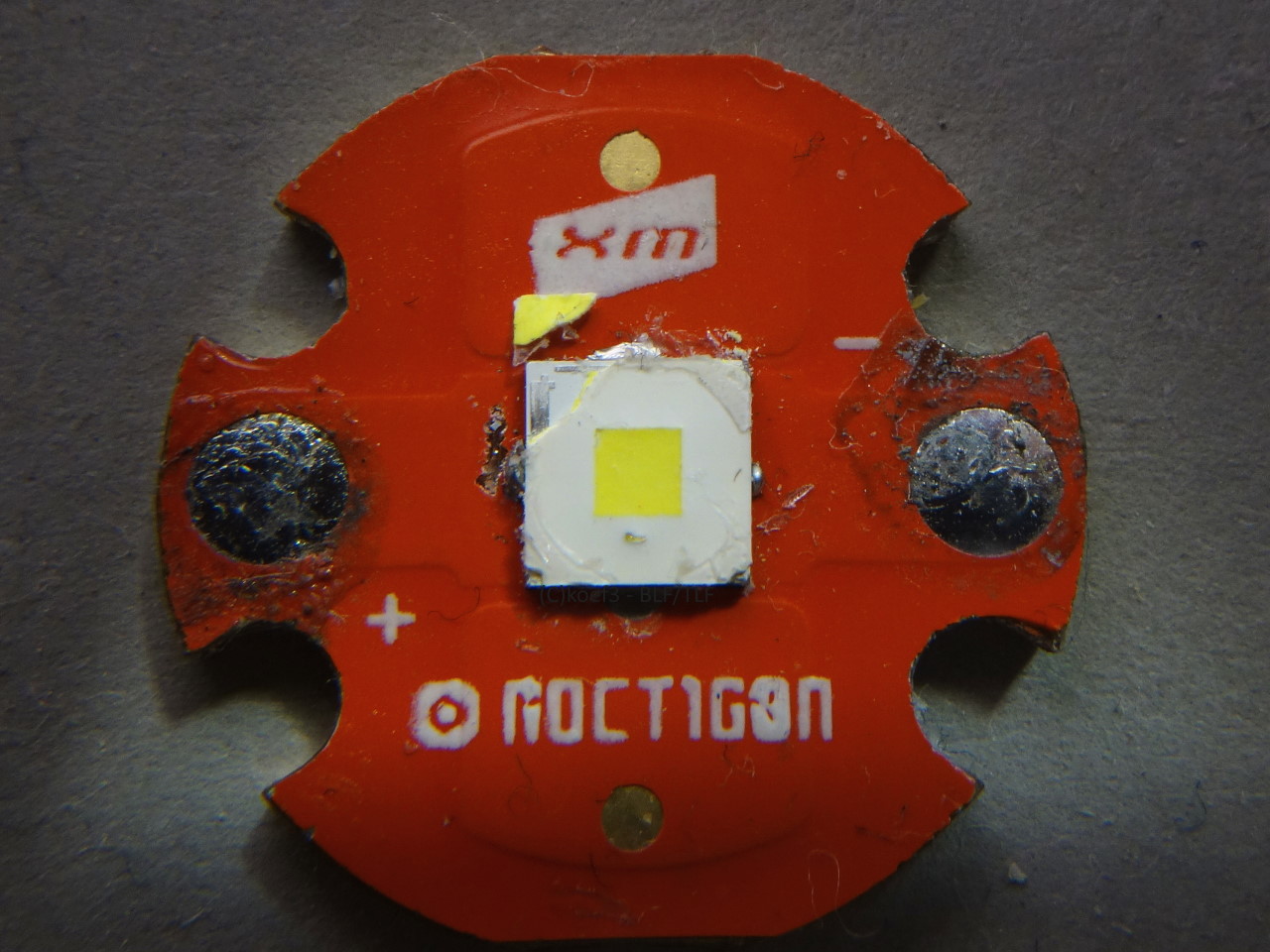


A broken off piece of the white silicone can be seen in the upper right, which additionally covers the silver-gray substrate around the light area. Interestingly, two layers have been applied: a yellow layer (phosphor?) and then subsequently the white sealant, on top of which the transparent silicone dome is then placed in the further course of production. (It would be easy for Cree to simply bring an XM-L2 HI to market, assuming appropriate binning of the color kits).
The optical properties changed again after the dedoming. At least the light quality in reflectors can be used without problems after dedoming, any rings are usually due to the quality of the reflector. In this example I used a SMO reflector from the Convoy C8.
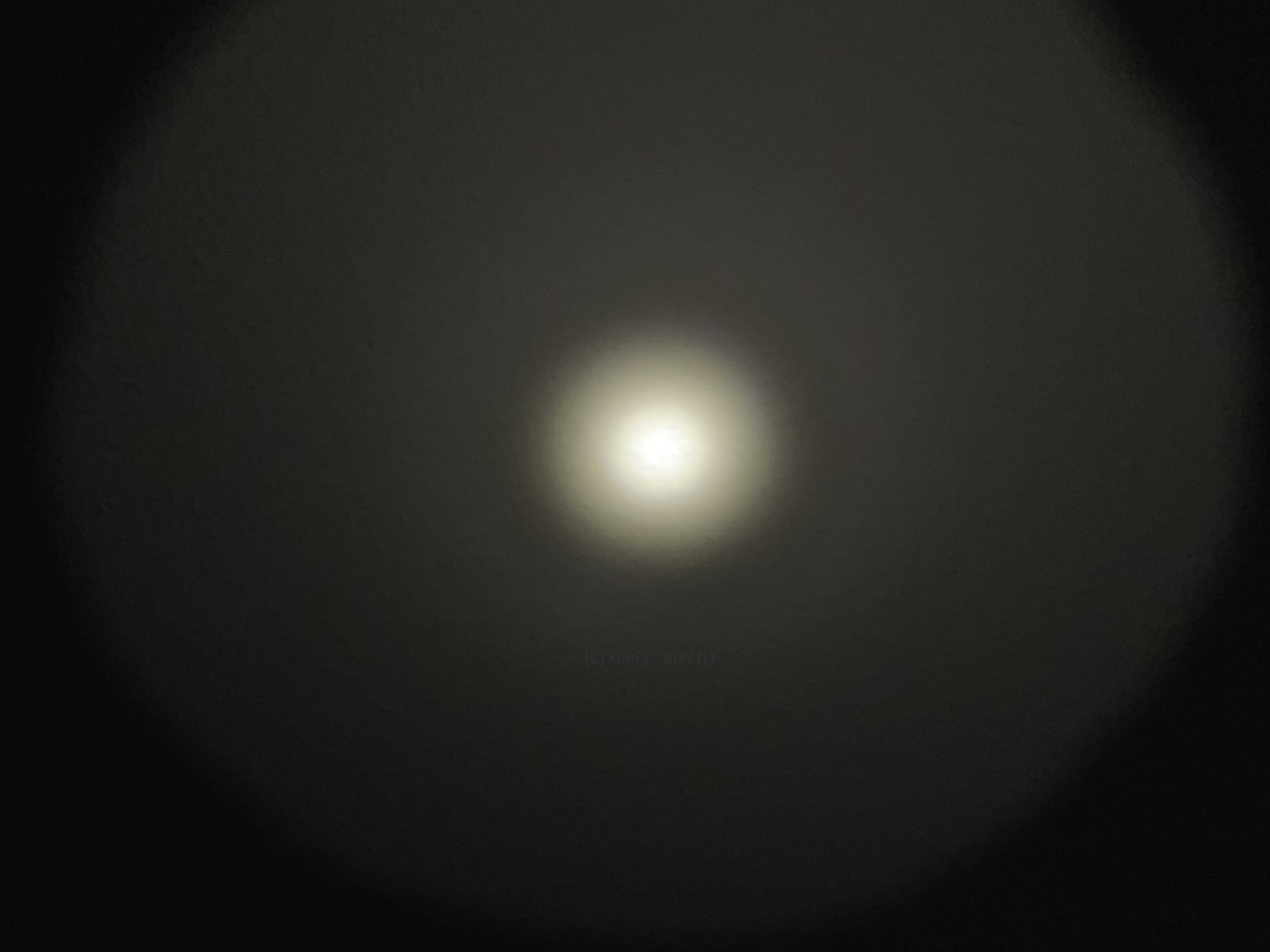
Noticeable is the lack of shining through silicone around the illuminated area; now the illuminated area is limited to the LED chip only, like with the recent Osram emitters.

The color temperature decreases significantly, as expected with the classic dedoming known from earlier LEDs. From about 6000 K the CCT changed to about 5000 K. Unfortunately, I do not have data from the original LED because the spectrometer had not yet arrived during the original (first) test. However, the light color did not change much when shaved.
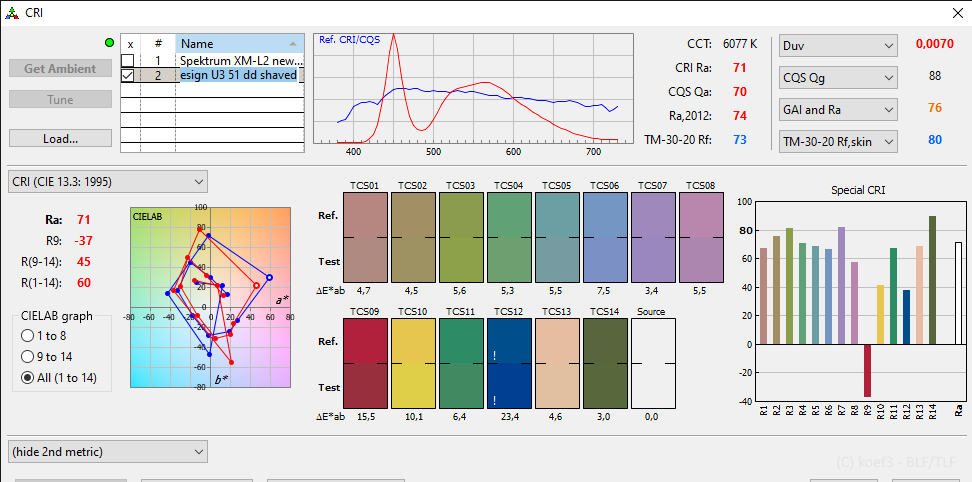
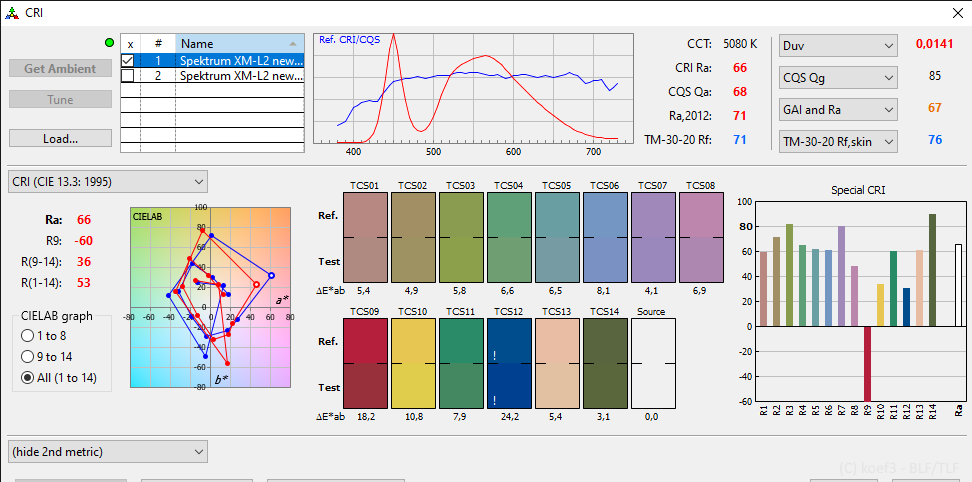
The spectral data offer no surprises, they are absolutely typical for an LED in the 70 CRI range, only the red component increases after the dedoming. Due to the color shift into the greenish range, the color rendering indices deteriorate significantly.
After full dedoming the LED turned "green white" and the color rendering deteriorated visibly. This is not nice, but is here due to the color grouping on the part of Cree. By appropriate binning or buying selected color groups, this problem can be avoided as before.
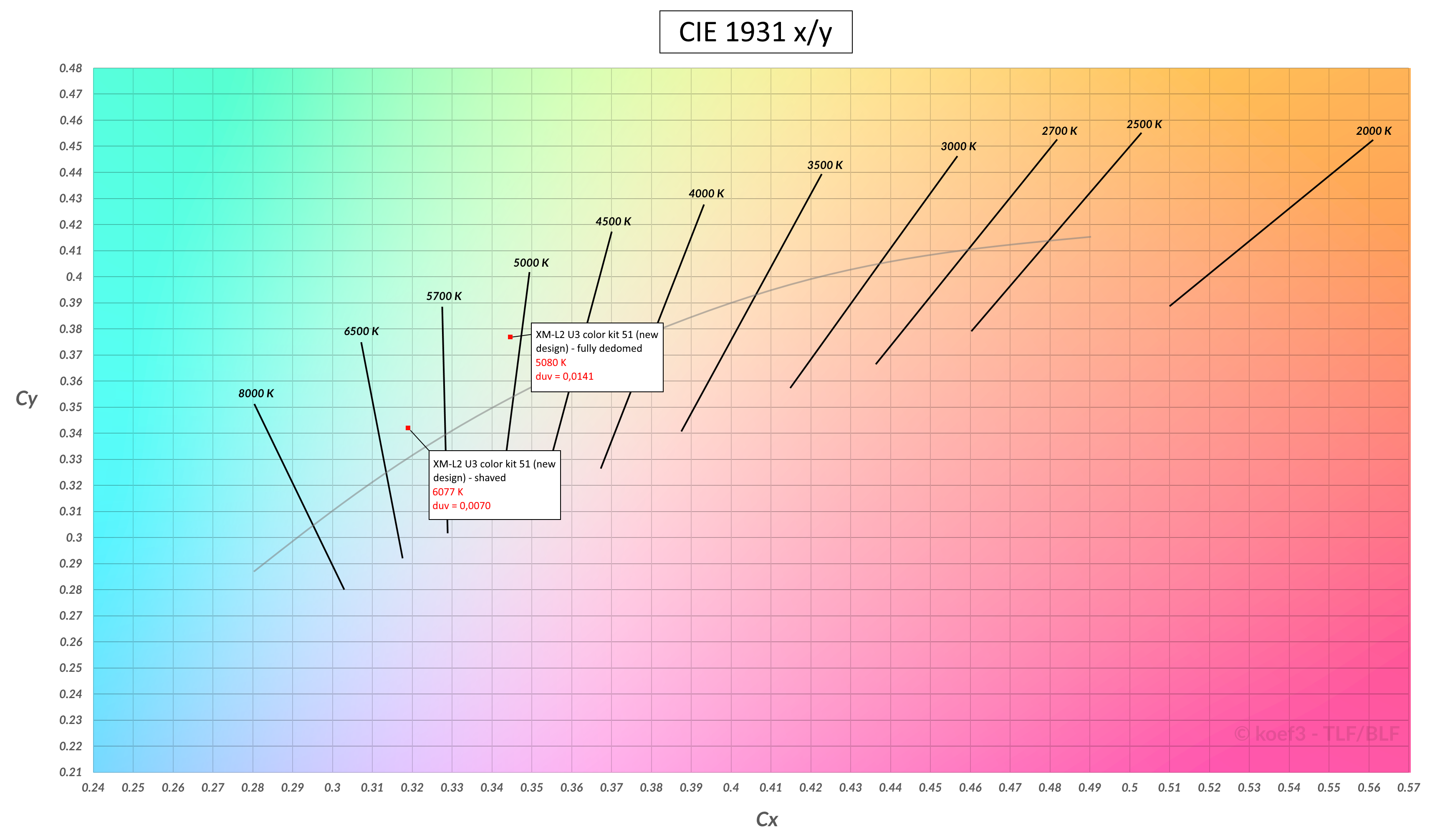
The luminance has increased significantly due to the full dedoming. It is now in the range of an XP-L HI, but the maximum achievable luminance is almost in the range of a Black Flat due to the better overcurrent capabilities. However, this is hardly practical due to the necessary current and electrical power. A worthy replacement for an XP-L HI or a dedicated SST-40 is the XM-L2 in new design all.
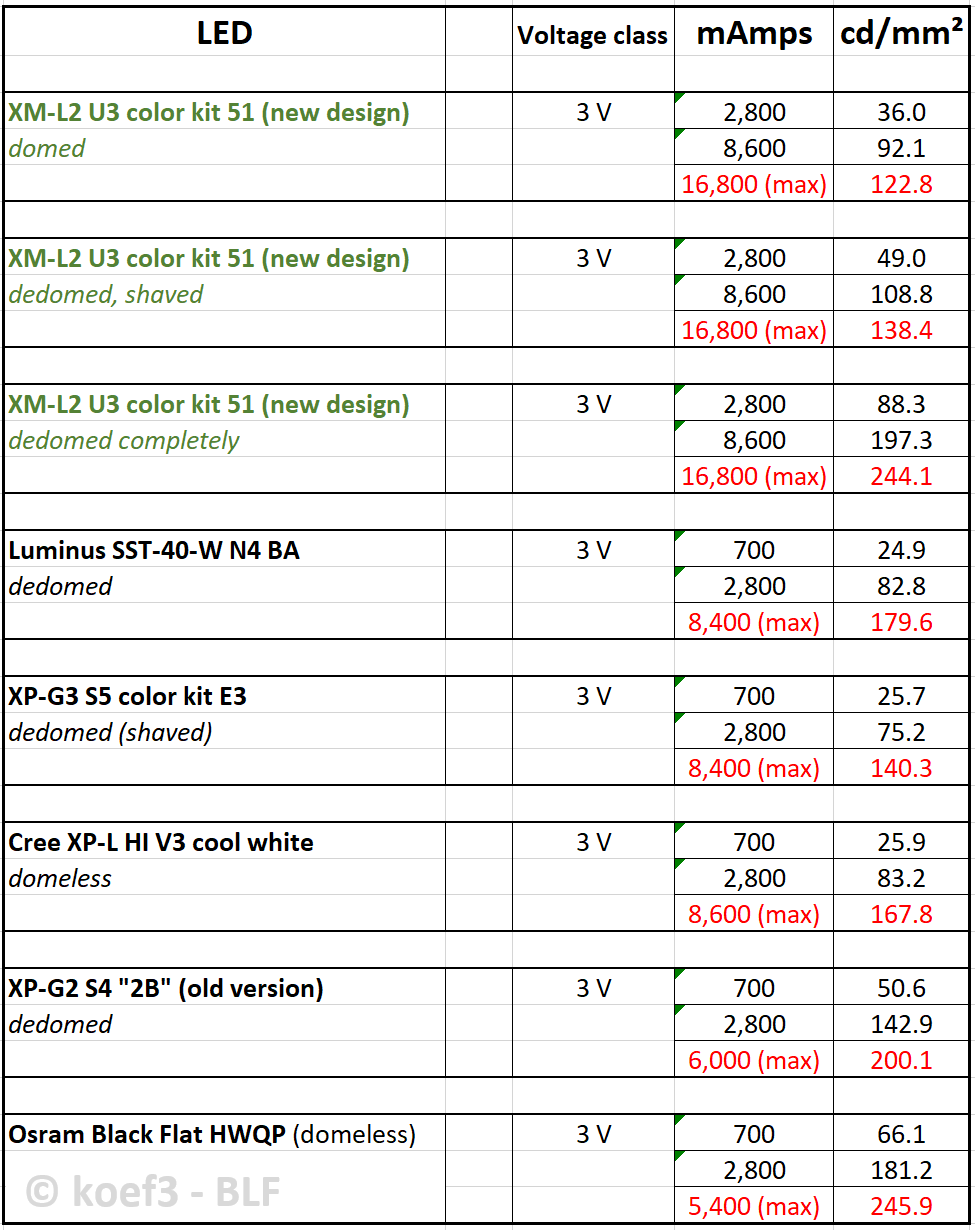
Hope this added information is helpful for new modding activities! :)
Greetings, Dominik









